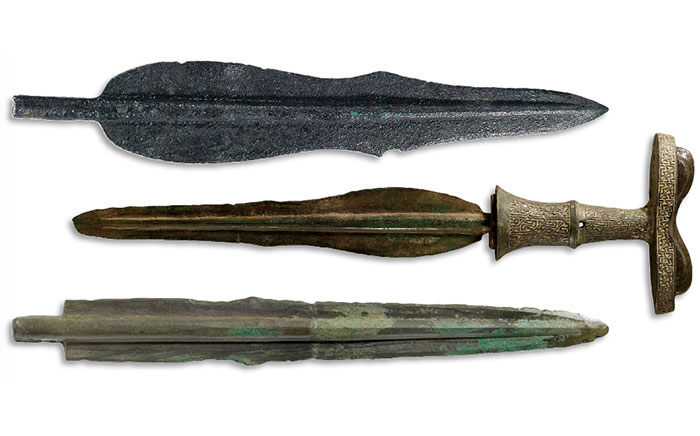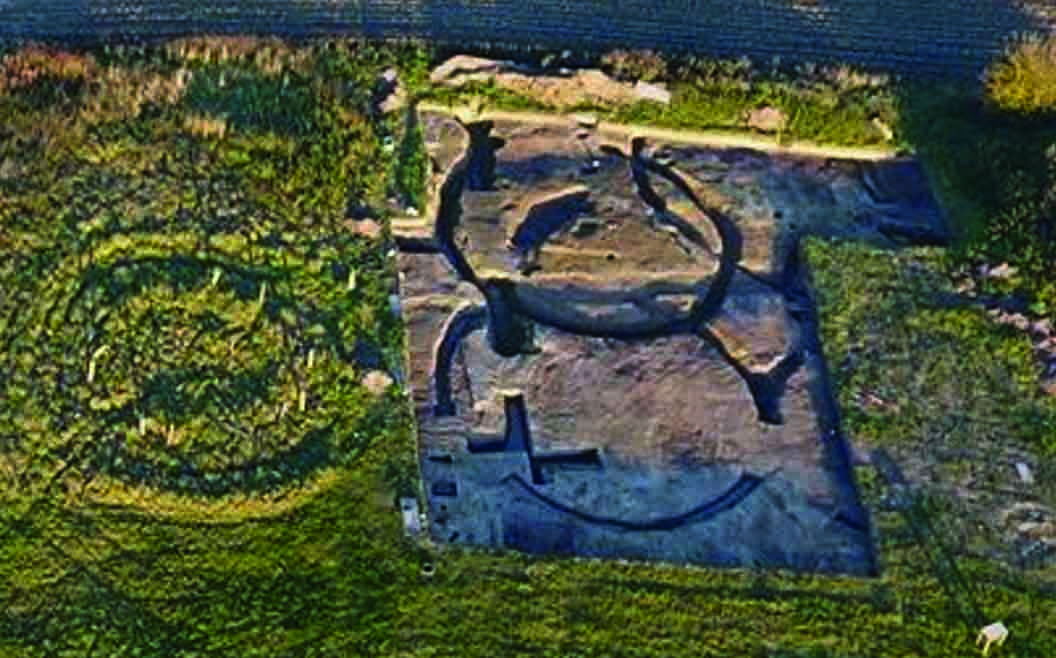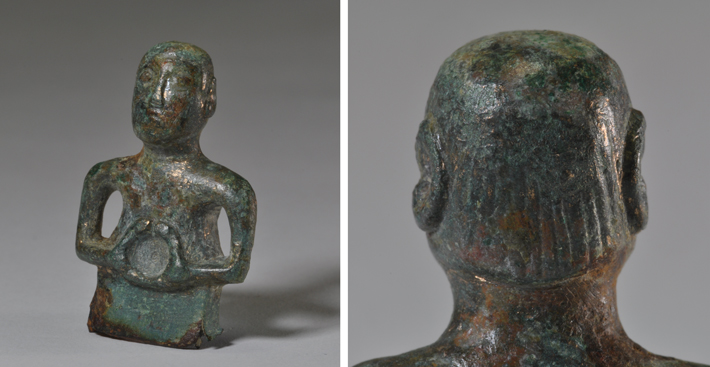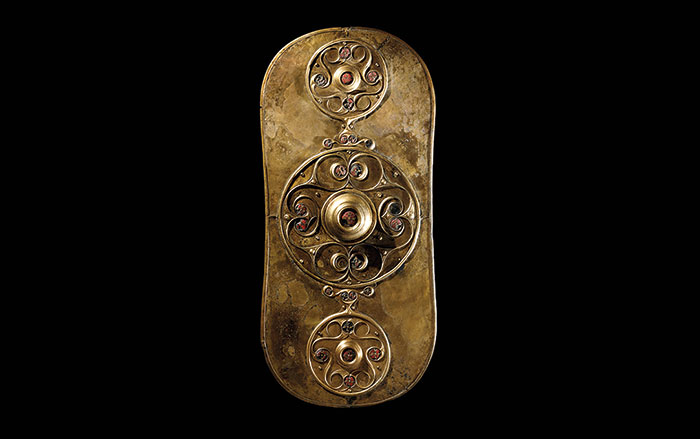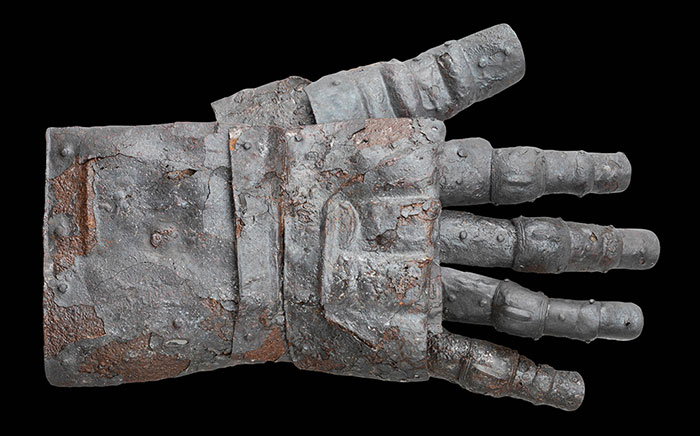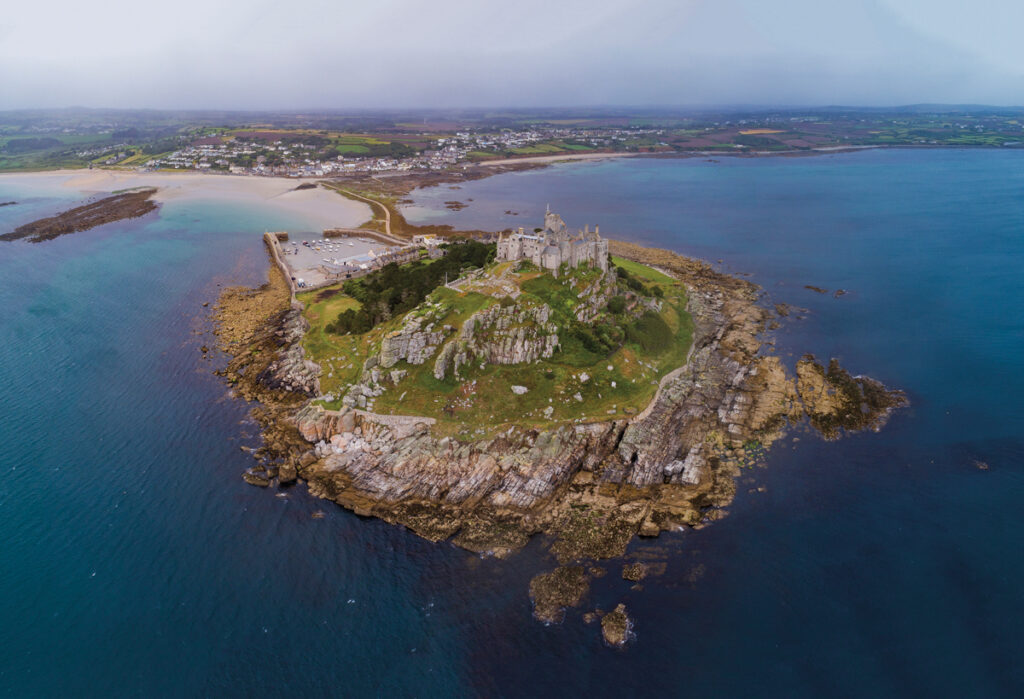
There are at least 17 places off the southern coast of Britain that modern scholars have suggested might be the island of Iktis, a major center of the Iron Age (ca. 750 B.C.–A.D. 43) tin trade. The confusion, however, didn’t begin in modern times, but rather with the multiple ancient authors who mention the island. The only one to call the island Iktis—without saying exactly where it could be found—is the first-century B.C. Greek historian Diodorus Siculus. Diodorus, who likely drew on other ancient Greek sources, reports that the Greek explorer Pytheas sailed to the British Isles in the fourth century B.C., landed in what is now Cornwall, saw the island, and wrote about it in his now-lost book On the Ocean. In his Library of History, Diodorus writes:
To an island which lies off Britain and is called Iktis, for at the time of ebb tide the space between this island and the mainland becomes dry and they can take the tin in large quantities to the island on their wagons…
In the first century A.D., the Roman naturalist Pliny the Elder and the historian Suetonius used the name Vectis to refer to the Isle of Wight, which at some point became conflated with Diodorus’ Iktis, further muddying the waters. Pliny may also possibly reference Iktis in his Natural History when he refers to the island of Mictis—a name he got from the fourth-century B.C. Greek historian Timaeus—which, he writes, lies “six days sail from Britain where tin is found.”
Since at least the beginning of the nineteenth century, classicists and antiquarians have tried to pinpoint which island off the southern British coast is, in fact, the one to which these ancient writers refer—with little luck. And, despite repeated efforts, archaeologists, too, have resolved little except their commitment to their individual beliefs. Some say Iktis is Saint Michael’s Mount, a tidal island off Cornwall that once belonged to the same Benedictine monks who owned Mont-Saint-Michel off the French coast. Others believe it is a 60-foot-high limestone promontory jutting into Plymouth Sound now known as Mount Batten. Small-scale excavations were undertaken there beginning in the early nineteenth century, but little was recorded, and most of what remained there was destroyed during a WWII bombing raid. Nonetheless, finds including fourth-century B.C. fibulas, or pins, from northwest Iberia, brooches and bracelets made in the Iron Age La Tène style that was widespread across Europe, and coins of British Iron Age tribes suggest the site was heavily used during the Iron Age.
Although Pliny writes that the tin upon which peoples on the European continent and beyond depended was “found” on the island, that was certainly not the case. Rather, the raw material was traded in what twentieth-century University of Oxford archaeologist C. F. C. Hawkes called the island’s “tin mart.” Here Diodorus is perhaps a more reliable source when he writes, “On the island of Iktis the merchants purchase the tin of the natives…whence it is taken to Gaul overland to the Mediterranean.”




